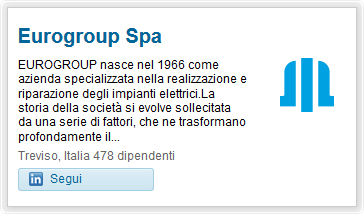From original idea to finished product, for a KNX novice list of questions on how to implement KNX into a new device can be quite long:
Which KNX medium (eg twisted pair or Radio Frequency) should be used? What software requirements are required by KNX? Which communication objects - data formats - should be used and how are they programmed? What are the hardware requirements for the device? There are standard? As components of the device, for example, which configuration modes will be put into service should be supported? There is technical support for assistance during the development? How is the certification process? To assess what is best for the development of a device, it is useful to know what are the KNX standard components available on the market for different transmission media.
Aspects of realization of KNX TP Devices
There are a number of technical terms that are common in the market like "BCU", "BIM", "SIM", "TPUART", "chipset" and "communication stack": these terms correspond to different possibilities of developing a KNX TP device .
BCU "Bus coupling units"
It is of system devices that comprise the coupling circuit to KNX and a microprocessor and are provided in a casing. The developer must simply develop the application module, the hardware and application software.
BIM "Bus Interface Modules"
They are interface modules consist mainly from the inside of a BCU and have doors of additional I/O. The BIM are sold as modules which can be soldered directly to the printed circuit board. with flash memory versions are available for application software from 8 up to 48 Kbytes. The software development takes place by means of a development environment that consists of a "Evaluationboard", an "On-Chip Debug Emulator" and a compiler for the C language.
SIM "Serial Interface Modules"
The SIM module contains the complete communication system without applications; hardware and application software related to the communication part via serial interface. The SIM are sold in the form of modules which can be soldered directly to the printed circuit board.
BAOS "Bus Access Object Server"
The BAOS Module (Bus Access and Object Server) serves as an interface to KNX for so Telegram level (KNX Link Layer) as on the level of data points (KNX Application Layer). The telegram format is FT1.2. For communication at datapoint level it is available an optimized serial protocol.
Chipset
The chipset of BIM are separately offered to circumvent the mechanical constraints of BIM. From the point of view of software there are no differences between BIM and chipsets.
TPUART
The TPUART only contains the real coupling to KNX. The communication software is supplied by a microcontroller connected The TPUART has been developed from one side to the microcontroller to avoid the task of encoding and decoding of the bits and the other to allow the coupling to KNX through different microcontrollers.
Communication Stack
For small amounts of product are recommended modules (BIM, SIM BAOS). They are characterized by low development costs and certifi cation and are ideal to start one KNX development. If there is no space or grow the quantities produced, the chipset is an interesting alternative. The initial costs are just a little 'higher as compared to BIM module. TPUART is the most used solution for products devices in series in large quantities. The TPUART is distinguished by low unit costs but it involves high development costs and certifi cation. In some cases it may be appropriate to opt for a Bit Transceiver (FZE1066).
Aspects of realization of KNX PL devices
Similarly to KNX twisted pair, BCU and modules (PIM) standard are also available for KNX PL (110).
BCU "Bus coupling units"
It is of system devices that comprise the coupling circuit to KNX and a microprocessor and are provided in a casing. The developer should be limited to only develop the application module, the hardware and application software.
PIM Powerline Interface Modules
The PIM modules consist basically on the low voltage of the BCU. PIMs are modules that are soldered to the printed circuit board together with the other components of the coupling network.
ASIC with Communication Stack
An ASIC for PL110 is responsible for sending and receiving bits. To build a KNX device based on ASIC, you need a KNX stack for Powerline (communication software). A communication stack contains the application programming interfaces.
What is the right solution?
The BCU are particularly suitable for production of small quantities to develop devices efficiently from a cost point of view. For products with medium quantities, PIMs are recommended and a circuit diagram is available. The development of PL devices with ASIC and communication stack requires larger investments as compared to BCU and PIMs and is therefore carried out by manufacturers with high production volumes.
The realization of KNX RF devices aspects
The development of KNX RF devices does not require special KNX components. To reduce development time and costs, it may be advantageous to use ready RF modules; this usually happens in the case of small quantities. A KNX RF node basically consists of the following:
Transceiver Chip
For KNX RF does not require a dedicated chip. Currently available are a pair of chip that can be used to implement a KNX RF node. For unidirectional devices are available at low cost chip for transmission only.
Circuit RFI
The transceivers form, together with a pair of passive components, the RF circuit. Based on the reference design of the chip manufacturer, a circuit can be designed and optimized to the KNX RF requirements.
Microcontroller
The heart of any KNX device is a microcontroller that controls communication and application tasks. For the RF transmission one of the most important requirements is low power consumption. The logic for interfacing to connect the transceiver should be present in most of today's controllers.
Communication stack
The KNX standard defines a complex protocol which leads to a high implementation and certification effort. The communication stack is the system software for a KNX RF device; controls the transceiver and manages communication, including the configuration procedure. The communication stack provides an interface (API) for application development.
Aspects of realization of KNX IP devices
The transmission of KNX telegrams via Ethernet is defi ned as a series of KNXnet/IP protocols and is part of the KNX standard. Until now specifi included the use of this medium for PC interfaces and routers. IP routers are similar to line couplers but they use Ethernet for the main line. Now in addition it is possible to integrate KNX end devices directly via IP in the KNX network. In this way Ethernet or IP (Internet Protocol) became a full half KNX. For the development of KNX IP devices it is not necessary components KNX special Bauteile. A KNX IP node consists mainly of the following:
Ethernet controller
The Ethernet controllers are available from different semiconductor manufacturers. The needs of IP KNX are normally met without problems. They are usually sufficient in most cases Controller mit einer speed of 10 Mbit/s.
Microcontroller
The choice of the microcontroller basically depends on the computing power necessary to the device. In principle, the KNXnet/IP protocol can be implemented on an 8-bit controller. Depending on the application, it may also be necessary controllers with superior performance. Many controllers already offer an interface for Ethernet on the chip, so that should be completed only the physical layer.
Communication stack
The system software for a KNX IP device consists of two protocol stacks. For communication via Ethernet requires an IP stack with UDP (User Datagram Protocol), as KNXnet/IP is based on a wireless communication. They are used both Unicast Multicast telegrams. On the IP/UDP stack is arranged the KNX stack. This is the common kernel KNX that naturally must be implemented in apothecary for each device model. The KNX Stack uses the IP/UDP stack as the interface to the system. The KNX telegrams translation UDP telegrams is established via KNXnet/IP. The KNX application has access to the API (Application Programming Interface) of the KNX stack to communicate with the entire system.
What is the right solution?
Choosing the right hardware depends significantly from the application. Special hardware implementations for KNX-IP devices are already available on the market. Also offered are the corresponding stack. For complex devices it can also be used powerful operating systems such as Linux, which normally contain an IP stack with UDP. In this case you are still only required the KNX stack and of course the relevant application program.











